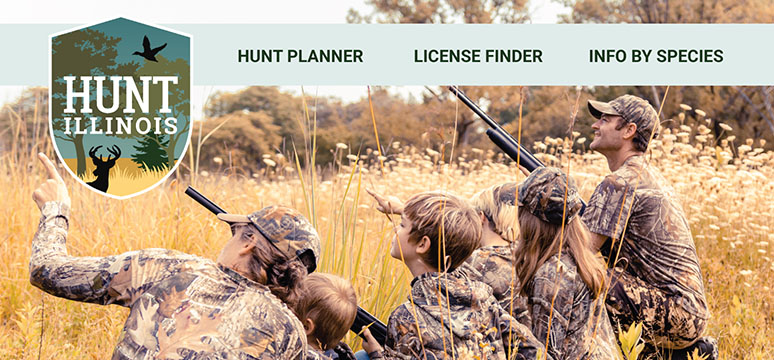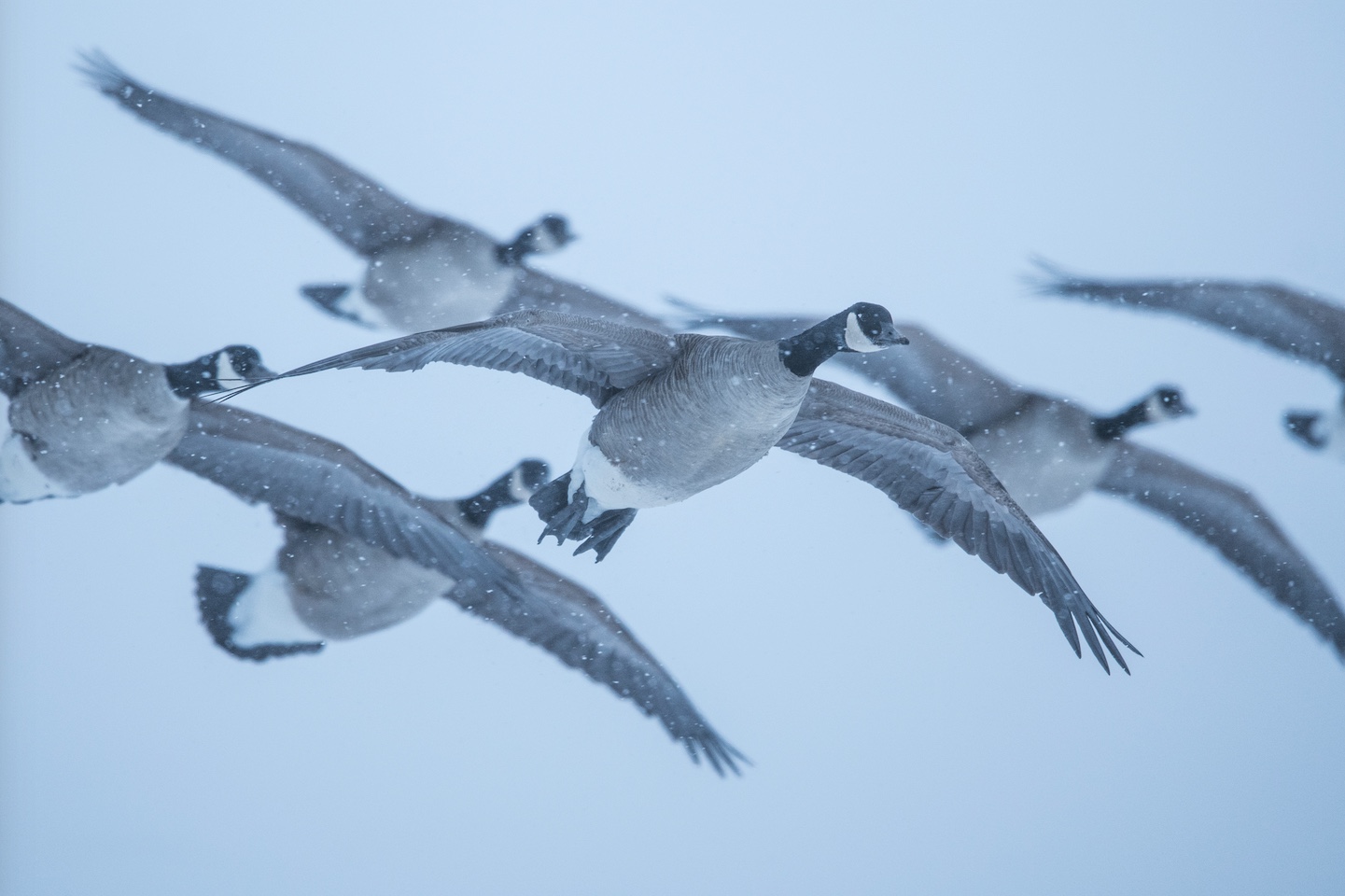
Description & Identification
There are 7 subspecies of Canada geese. The giant Canada goose (maxima) subspecies is the most common in Illinois and is a year-round resident.
Canada geese are large birds, weighing 6 to 24 pounds. A Canada goose has a black head and neck with a white patch on either side of the head. The back is brownish, and the breast and belly are brownish-white. Both sexes look similar, with females being somewhat smaller than males. Goslings (young geese) are yellow with gray-green or olive-colored feathers on the back and top of the head.
Check out the Cornell Lab of Ornithology All About Birds website about the Canada goose for audio clips, ID information, and life history.
Distribution & Abundance
Canada geese are the most widespread goose in North America. While there are several subspecies of Canada geese in North America, only the giant Canada goose (Branta canadensis maxima), the largest subspecies, is known to breed in Illinois. Geese from other subspecies and breeding populations from as far north as Hudson Bay, Canada, pass through during migration or spend the winter in our state. The presence of these Canada geese can add greatly to the numbers of geese in Illinois during these time periods.
Contrary to popular belief, while giant Canada geese make shorter and less frequent migrations than other subspecies, they do migrate as the severity of winter weather dictates.
Canada geese can go about 30 days without feeding if snow prevents access to food.
Behavior & Ecological Role
Canada geese are diurnal, meaning that they are active during the day. They spend much of their day grazing and foraging for food either on land or in the water. Canada geese are highly social birds. They fly in a V-shape formation because flying this way reduces wind resistance and helps the geese to conserve energy.
While nesting, a pair will be somewhat solitary, though several pairs may use the same area for breeding and raising young. During the breeding season, males may be aggressive towards humans and other animals if they come too close to the nest site or try to approach the goslings. In the fall, large flocks of multiple Canada goose families gather together for the southward migration to the wintering grounds.
Canada geese play important roles as seed dispersers and as a food source for predators.
Diseases & Public Health
Canada geese in Illinois are not considered to be a major public health concern, as they are not significant carriers of infectious diseases transmittable to humans or domestic animals. However, direct contact with geese or droppings should be avoided.
Habitat & Food
Canada geese use lakes, ponds, bays, wetlands, marshes, and stormwater management ponds. When feeding, they often use agricultural fields and areas of short vegetation, such as lawns. Canada geese are becoming increasingly common in urban areas in Illinois. Golf courses and ponds in residential developments are prime habitat for urban geese. Canada geese prefer a water source with a shallow slope to make access to water easier for their young. Bodies of water with tall vegetation nearby are less preferred since the tall vegetation can block the view of predators and interfere with flight patterns.
Reproduction & Longevity
Canada geese are monogamous and mate for life. They do not breed until their third year. The female builds the nest and incubates a clutch of four to ten (usually 5 to 7) eggs. Incubation lasts 25 to 30 days. Canada geese raise one brood per year, renesting only if their first attempt is unsuccessful.
Goslings are precocial. This means that they are born with downy feathers, with eyes open, and capable of moving and leaving the nest within 24 hours of hatching.
The male will aggressively defend the nest and goslings. Young geese stay with the parents after hatching and follow them to the wintering grounds in the fall.
Canada geese can live more than 20 years. Based on bird-banding records, the oldest known wild Canada goose in Illinois was almost 30 years old when it died. However, many Canada geese do not survive their first year, falling prey to predators such as gulls, American crows, raccoons, or skunks during the incubation stage or to coyotes, snapping turtles, or mink as goslings. Others do not successfully complete their first migration.
Healthy adult Canada geese have few predators besides coyotes. Hunters harvest some of the Canada goose population each year, which helps control goose populations.
Damage Prevention & Control Measures
Canada geese are not likely to do much damage when there are only a handful of birds. However, large flocks of geese can lead to problems. Geese that have successfully raised young in an area are likely to return to that area the next year. Thus, over the course of a few years, a pair of geese can quickly multiply into a large flock of geese. Additionally, the presence of geese on a lake or pond attracts more geese to the area.
In rural areas, large flocks of geese can damage agriculture crops. In urban areas, Canada geese can cause traffic jams, reduce water quality, contaminate lawns or golf courses with droppings, and damage turf by grazing, or they can pose a safety threat when they fly near airports.
Preventing geese from using an area is much easier than discouraging them from using a site once they are established. Once geese have found suitable habitat, it is very difficult to discourage them from using the site. If geese have already established themselves on your property, the best way to control them is to use a combination of management techniques. The USDA Wildlife Services has several resources, including a guide to help people prevent and handle conflicts with geese: IL WS Canada Goose Document Revised 9-20-2021
Habitat Modification
Geese prefer to use ponds with gently sloped banks that are surrounded by short grass. Tall vegetation can impede their flight or obstruct their view of potential predators. Modifying the landscaping can help to discourage geese from using a pond.
When building a pond, build so that there is an 18- to 24-inch vertical bank. Ponds with steeper banks are harder for young geese to get in and out of and can help deter geese from using the site.
If the pond is already built but has a shallow slope, there are still changes you can make. Plant trees and shrubs around the pond. Also try planting taller grass species, and limit mowing to once or twice a year in an area adjacent to the shoreline of the pond.
Allow ponds to freeze in the winter.
Do not feed geese or ducks. Artificial feeding attracts more birds than would naturally be found at a site, and the easy meals tend to keep geese from migrating as soon as they normally would.
Exclusion
Three-foot-high poultry wire fences will help keep geese out of gardens or yards, especially during summer. Good results have also been reported using 20-pound or heavier monofilament fishing line or light rope to make a three-strand fence. The first line should be 6 inches above ground, the second line is fixed at 12 inches high, and the third at 18 inches above ground. Aluminum foil or plastic flagging helps increase visibility of this type of fence. The monofilament fence is most effective if it is in place before geese start to use the area for nesting in early March. Some lake associations have also had success with two-feet-tall wire mesh fences installed directly at the water’s edge. The wire fence must remain tight, otherwise the geese will walk right over it into the water. If aesthetics are a concern, using green wire will help the fence blend into the landscape.
Repellents
ReJeXiT and Bird Shield are two approved taste repellents available for use on turf areas where geese feed. Both are made from a nontoxic ingredient called methyl anthranilate. These repellents are most effective if used where geese browsing cannot be tolerated, leaving other areas of turf untreated. This technique can be used to train the geese to stay out of certain portions of the property. These products may be effective in keeping geese from damaging plants, but they will not discourage them from swimming or resting at a site. Both of these products are biodegradable and will have to be reapplied after heavy precipitation events and as the plants grow. Note that if large areas are to be protected, cost can quickly become a factor.
FlightControl PLUS is another effective taste repellent. Geese experience a temporary but effective digestive irritation after consuming turf that has been treated with this product. This product must be applied by a certified applicator.
Harassment & Frightening Devices
Harassing geese is legal unless they have an active nest. They may be physically chased from a site, or various other techniques can be used to deter them from establishing a pattern of use in a particular area. Radio- or remote-controlled vehicles such as boats, trucks, and drones may be used to frighten geese away.
The use of trained dogs to harass geese has proven to be an effective way to keep geese from using a site; however, the dogs are not allowed to make contact with or injure the geese. The use of artificial dog or coyote decoys can help deter goose use of an area when moved frequently and used in combination with other disturbance methods.
In rural areas and outside of municipal boundaries, hunting can be an effective way to reduce goose numbers while also deterring future use and providing recreational opportunities.
Commercially available lights, lasers, and other products are available but tend to have limited effectiveness.
Use of Mute Swans Is Not Recommended
Mute swans will aggressively defend their nest sites during the spring breeding season and may harass nearby Canada geese. However, during other times of the year they are less aggressive towards other waterfowl. In fact, they are often seen using the same water bodies as Canada geese.
Mute swans are not native to Illinois, they produce a lot of fecal matter, and their foraging habits can severely damage aquatic plants. Because their diet is similar to that of native waterfowl, they often outcompete the native wildlife because of their size and feeding habits. For all of these reasons, the use of mute swans as a goose deterrent is strongly discouraged.
Removal
In Illinois, Canada geese, like all waterfowl, are protected by the federal Migratory Bird Treaty Act and the state Wildlife Code. It is illegal to kill or remove geese or to destroy, move, or disturb their active nests, eggs, or young without a PERMIT from the Illinois Department of Natural Resources. In certain situations and settings, a permit may be issued to destroy eggs. If you need assistance with an urban Canada goose issue, contact the Illinois Department of Natural Resources Urban Waterfowl Project Manager at 847-608-3177.
For More Information
Click HERE for more information from USDA-APHIS-Wildlife Services on dealing with damage caused by geese and ducks.
Legal Status
Canada geese are federally protected by the Migratory Bird Treaty Act. They are also protected by the Illinois Wildlife Code. In urban areas, Canada geese may not be removed. For more information about a conflict with Canada geese, contact the Illinois Department of Natural Resources Urban Waterfowl Project Manager at 847-608-3177.
In rural areas, hunting can help control populations of Canada geese. An Illinois hunting license, Illinois waterfowl stamp, federal waterfowl stamp, and registration with the Harvest Information Program are required.The Illinois Digest of Hunting and Trapping Regulations has more information about licenses and current waterfowl hunting regulations in Illinois.
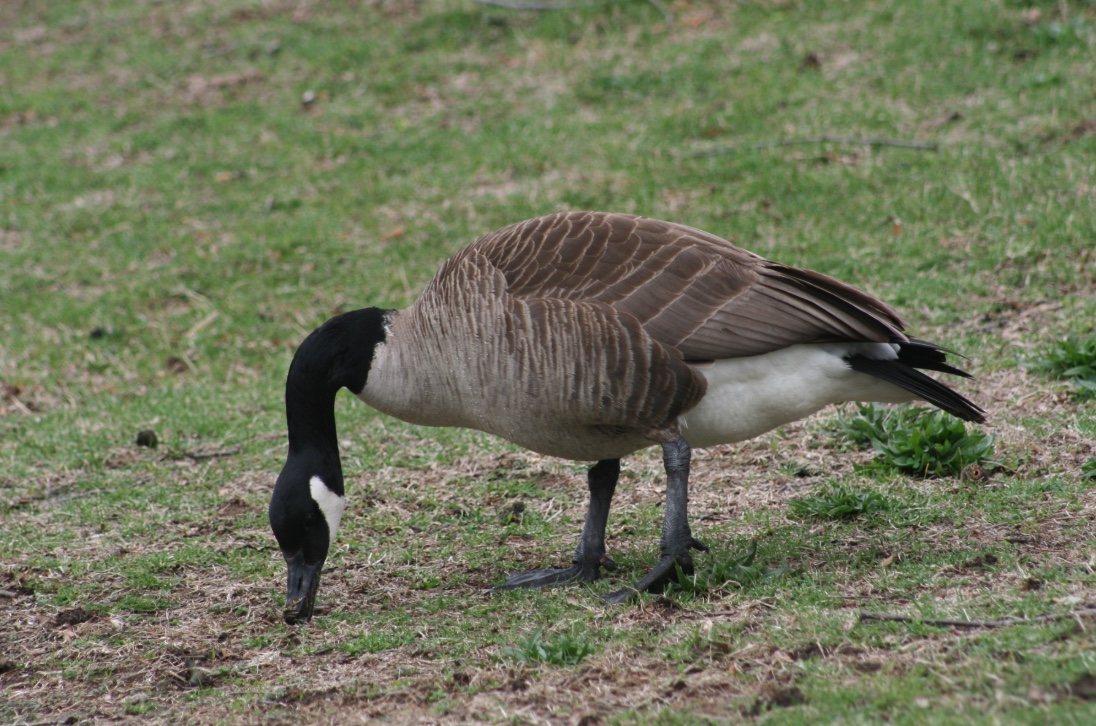
Photo: Laura Kammin
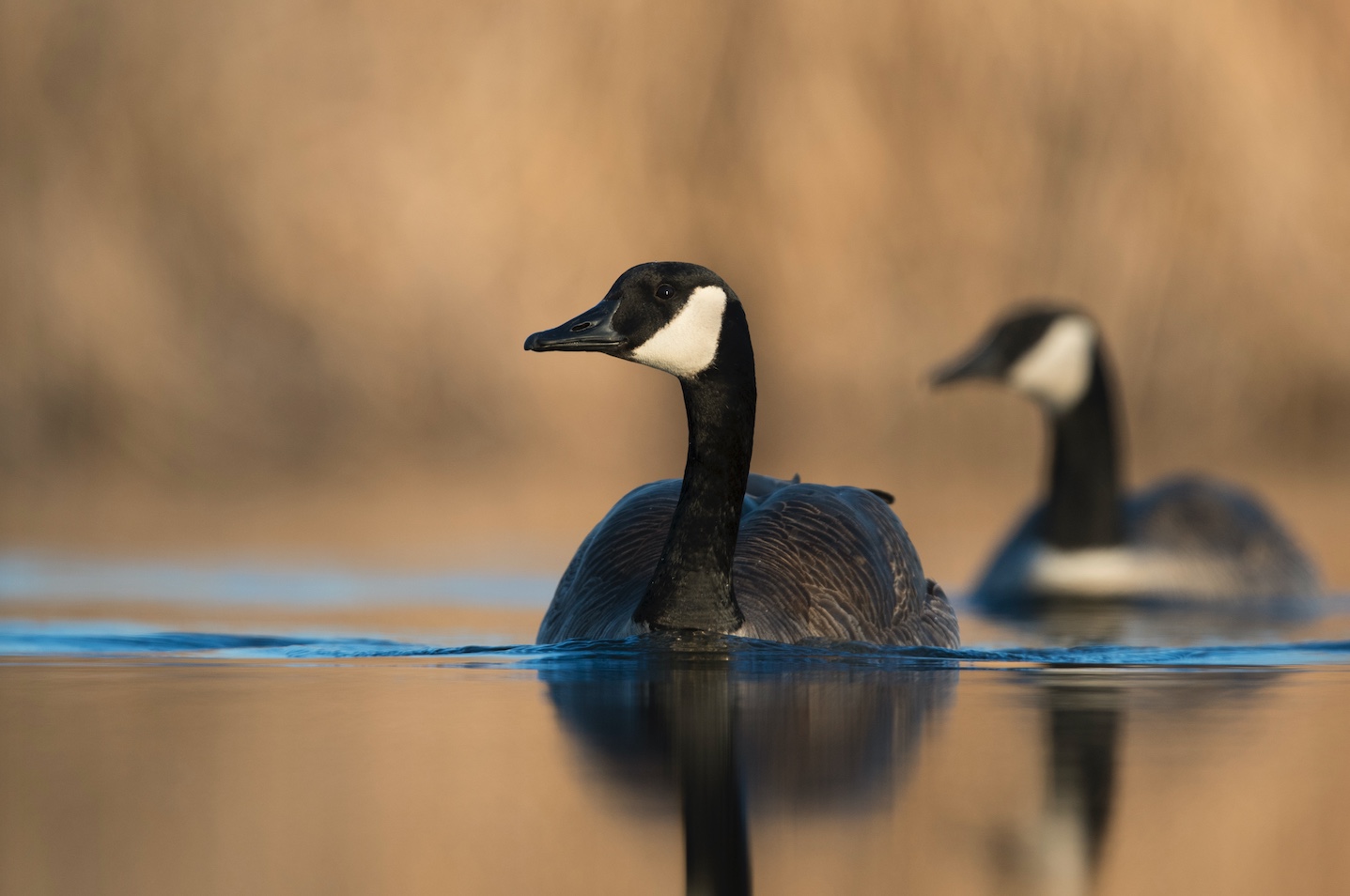
Photo: Ryan Askren
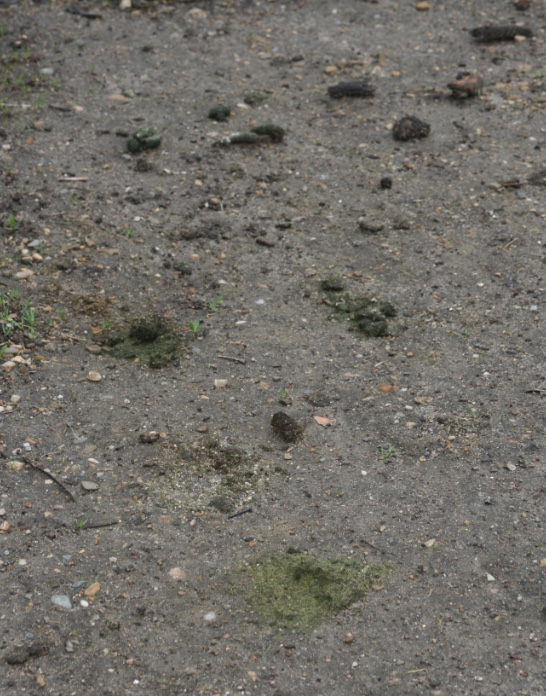
Photo: Laura Kammin
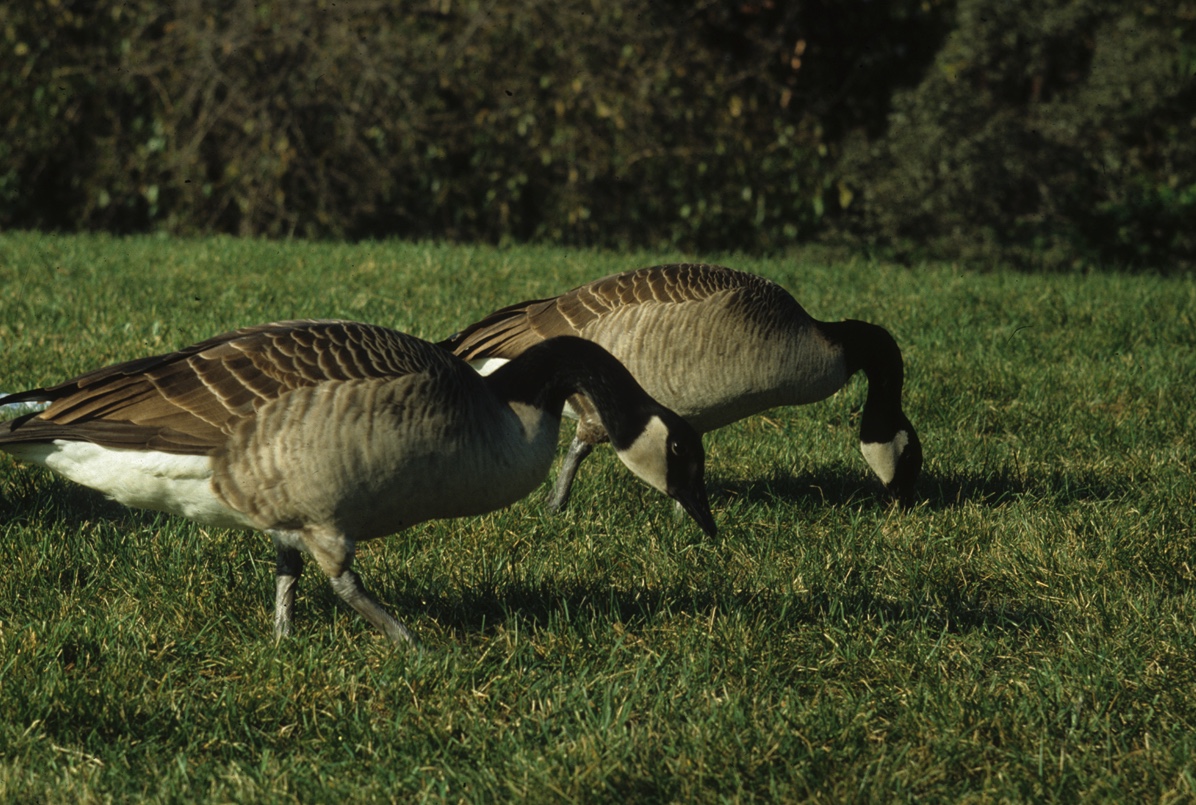
Photo: Willowbrook Wildlife Center
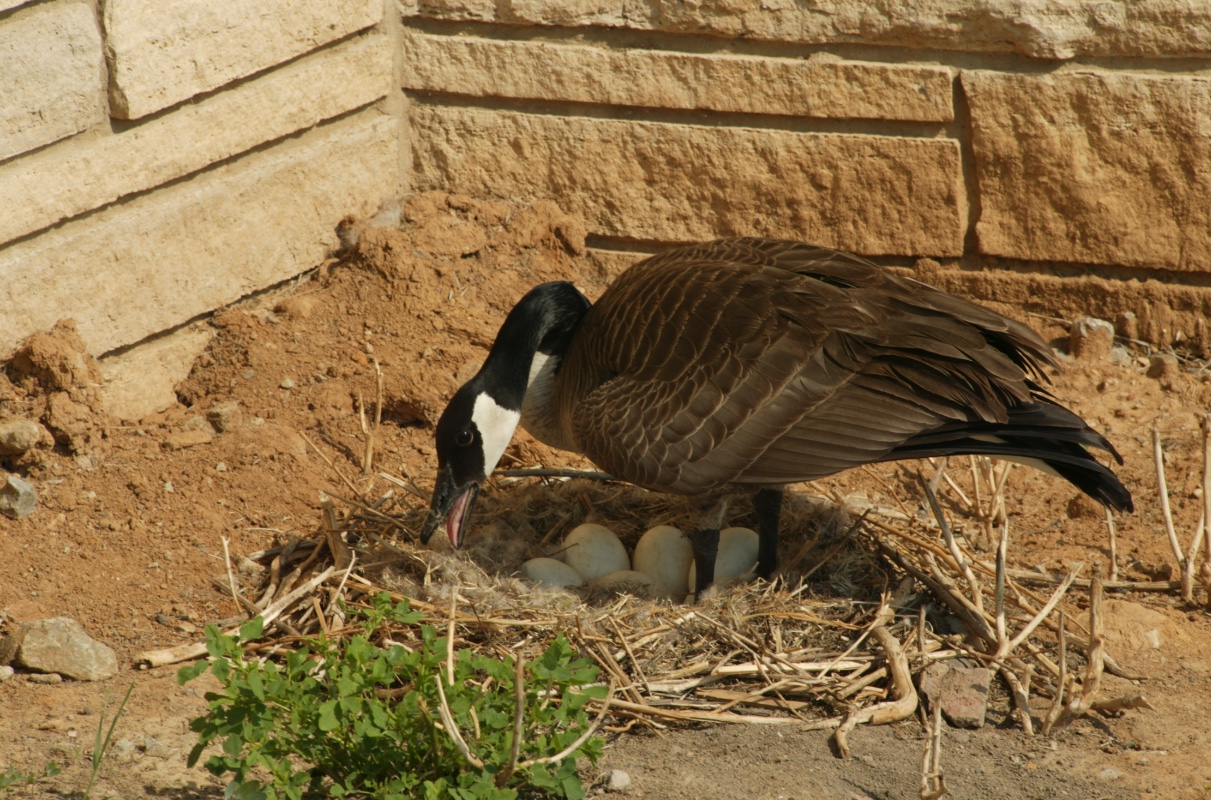
Photo: Adele Hodde, IDNR
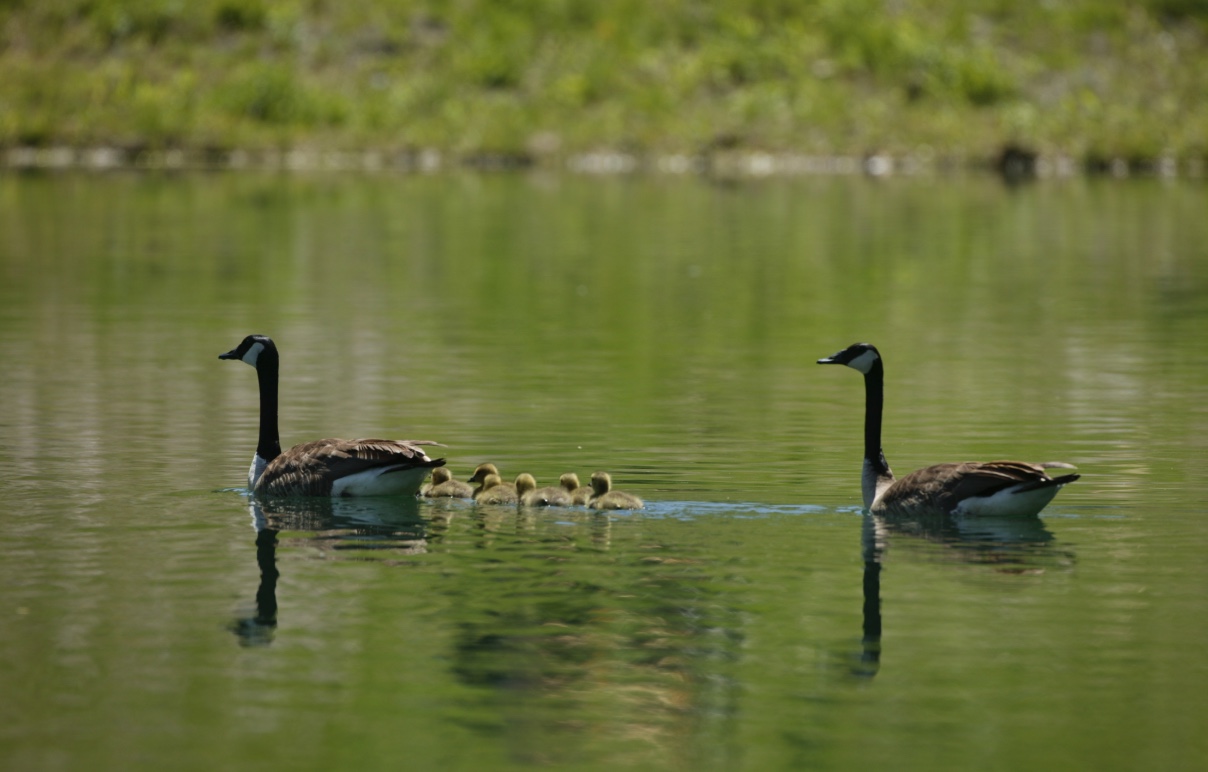
Photo: Adele Hodde, IDNR
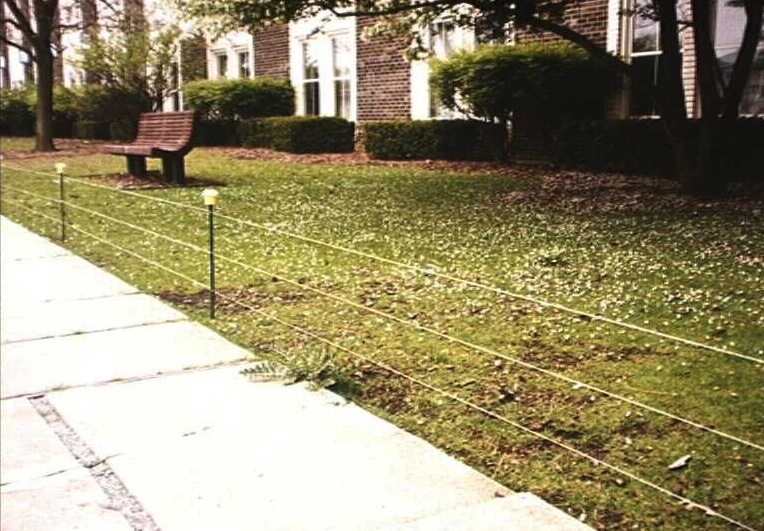
Photo: United States Department of Agriculture





